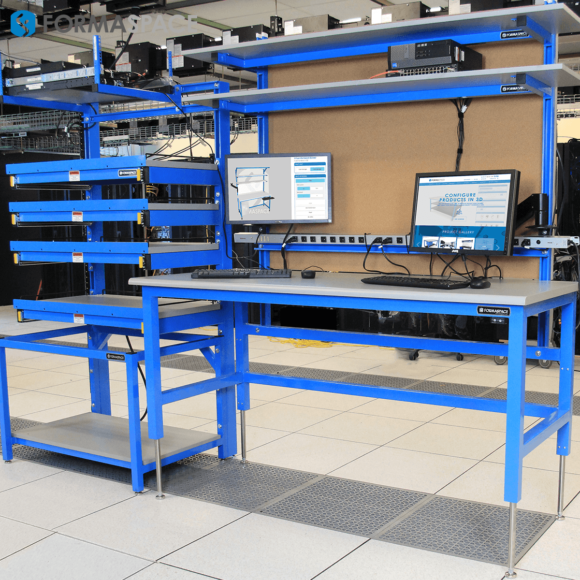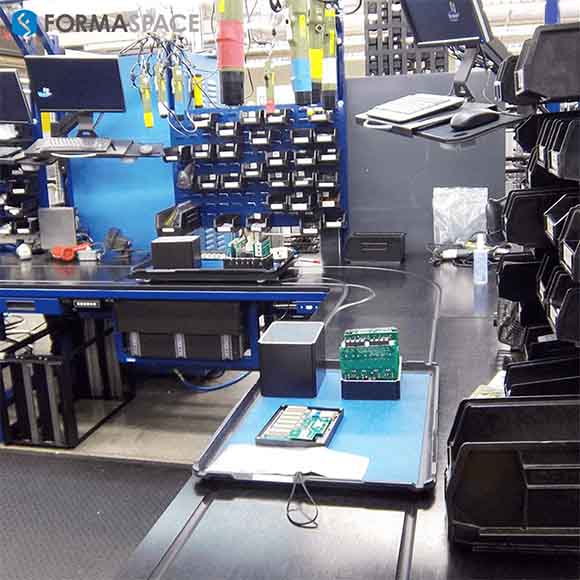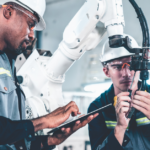The North American Printed Circuit Board (PCB) market saw significant order growth at the tail end of 2017. What are the key factors affecting the industry’s improving outlook? We take a look at 10 trends that are changing the future of the PCB and PCB Assembly (PCB/A) market.
According to statistics released by IPC, the industry association for printed circuit board and electronics manufacturing service companies, new PCB orders in the North American market increased for the fourth consecutive month, with a particularly sharp spike in bookings during Dec. 2017 (a 39% year-over-year increase).
After a period of relative stagnation, this is welcome news. According to IPC’s Director of Market Research, Sharon Starr, “…strong bookings growth and 11 consecutive months of positive book-to-bill ratios support a rosy outlook for continued sales growth in 2018.”
As the North American PCB and PCB/A market recovers, now is a good time to review the key trends that will influence the future growth and direction of the industry.
1. Built-In ESD Protection Systems
Our first PCB/A trend to watch is the wider availability of PCB substrates and microdevices that have built-in Electrostatic Discharge (ESD) protection.
As an example, TDK has recently expanded its line of ultra-thin ceramic substrates with integrated ESD protection developed for the LED lighting market.
It would be a tremendous boon to the PCB/A industry if more components could incorporate ESD protection at little or no cost/weight penalty.
But in the meantime, ESD continues to be a major problem during component assembly and testing.
Your best defense?
Formaspace offers a line of ESD workstations and desks with built-in ESD protective surfaces — from one end of the work surface to the other. No need to remember to move your work onto ESD mats; with ESD workbenches the protection is always on.
2. Rise of Smart Consumer Devices with Smaller, More Tightly Packed PCB Boards
Perhaps we should call it the iPhone effect.
Since its introduction 10 years ago, the iPhone has driven customer expectations for fully-integrated, multi-functional, miniaturized consumer electronic products higher and higher. Interest in previously hot technologies, such as PCs and laptops, has cooled as customers expect small handheld or wearable devices to deliver functionality that was the stuff of far-off science fiction (viz the Star Trek communicator) only fifty years ago.
The shift toward miniaturization as well as wearable technology has driven the miniaturization of components such as RF/wireless functionality to its limit, yet the reward for innovation continues to show high growth potential.
ID Techex predicts the market for wearables technology will grow to $160 billion by 2028, with the sensor market taking a $5 billion dollar slice.
3. Impact of Cyber Hacking on PCB Board Assembly Industry
The rapid growth of Internet of Things (IoT) devices represents an unprecedented opportunity for the PCB/A industry. In the furniture industry alone, industry analysts predict there may be as many as 24 billion IoT devices connected to smart furniture by the year 2024.
Yet, as we’ve seen in the news recently, the combination of cyber-criminal activity and lax security implementations could be responsible for killing off the goose before it’s had a chance to lay the proverbial golden egg.
The computer chip industry was shaken to its core by the announcement that hackers using the so-called Meltdown exploit can penetrate every Intel PC processor built since 1995. This (combined with the vulnerability known as Spector, which can theoretically affect all processors in existence today) represents an unthinkable existential threat to the PCB/A industry.
This comes at a time when government officials are calling for increased scrutiny on the potential security risk posed by the reliance on technology investments from countries such as China. As a result, we expect to see increased preference, even legal requirements, for purchasing American-made and funded tech products, particularly in artificial intelligence and communications infrastructure.
While the typical PCB fab and assembly operations manager may consider these to be international trade issues “above their paygrade,” the PCB/A industry cannot overlook its responsibility for maintaining a safe, productive Internet.
The baby monitor scare of 2015/2016, in which strangers were able to access images inside people’s homes due to lax security procedures (such as supplying easily identifiable default passwords), should have set off a major alarm in the PCB/A industry. Yet in October 2016, cyber-criminals were able to organize a collection of nearly 150,000 Internet-connected devices, ranging from smart appliances, routers, and cameras, to bring down the Internet infrastructure company DYN with a massive denial of service attack (DDoS). As a result of this botnet operation (dubbed Mirai), major brand name Internet companies, ranging from the New York Times to Twitter, Netflix and Amazon, became inaccessible to their online customers.
What can be done?
Designers of PCB board assemblies need to make them secure for consumers during the installation process as well as providing means to automatically update the software to fend against new exploits.
If something doesn’t happen soon, then the entire industry could be at risk.
Fortunately, researchers are looking at ways to protect consumers (and their identities) from cybercrime exploits.
For example, IBM is looking at ways to embed cryptographic keys into the substrate of printed circuit boards, without having to encase them in plastic panels that can warp boards. Meanwhile, MIT researchers have found ways to incorporate public key cryptography into silicon, reducing the need to drain current from the batteries of small devices.
4. Need to Certify Safety of Microcontroller-Powered Machine Learning / Artificial Intelligence (AI) Systems
Artificial intelligence (AI) powered computer systems are increasingly taking a more active role in our lives. For example, the complex technology infrastructure that allows modern passenger jet aircraft to take off, , fly, and land on autopilot — essentially making life or death decisions on our behalf — are now working their way into new applications, such as self-driving vehicles.
Market research consultant Technavio predicts that the resulting high demand from the automotive sector will help boost the worldwide PCB market significantly in the coming years; they predict a 6% compound annual growth rate (CAGR) over the period 2017 – 2021.
This demand will be amplified as individual microcontrollers become powerful enough to support machine learning. (At present, most machine learning applications need to run on “big iron” computer hardware, typically located in the cloud.)
This powerful combination could be a veritable bonanza for those in the PCB/A industry who have the expertise and know-how to manage the type of compliance certifications that will ultimately be needed to certify that their PCB components are fit for purpose.
In other words, compliance testing of entire systems will become a critical path for taking advantage of these market opportunities. PCB/A companies that already work to high standards in the military or aerospace sectors will have a leg up, but according to Todd Hubing, Professor Emeritus of Electrical and Computer Engineering at Clemson University, AI automotive applications may be much more difficult to test and certify than existing aerospace applications. While presenting at DesignCon 2018, Hubing reminded us that “a commercial aircraft has about 10 million lines of code, while a typical luxury car has about 100 million lines of code,” which underscored the increased complexity of certifying systems for ISO 26262 safety requirements, not to mention the difficulties achieving Electromagnetic interference (EMI) and Electromagnetic compatibility (EMC) compliance.
5. Using Virtual Reality (VR) and Augmented Reality (AR) Simulations in Electronic Assembly
The role that new virtual-reality (VR) simulations play in the PCB/A industry depends on whether we are talking about PCB fabrication or assembly.
There’s less of a need for donning VR glasses to fly around looking for errors in the PCB fabrication side of the business as there are already a robust set of virtual design tools to manage design issues under the umbrella of Design for Manufacturability (DFM). These include specialized software tools for Design for Assembly (DFA), Design for Fabrication (DFF), and Design Rule Checking (DRC) which, when used together properly, can catch design errors in the circuitry as well as common manufacturing errors, ranging from slivers, missing solder pads, acid traps, and starved terminals, before fabrication begins.
On the PCB/A assembly side of the business, VR and AR are poised to have a positive impact on the way personnel are trained and guided when learning to assemble new products, perform quality testing, or disassemble them for maintenance and repair. Advances in heads-up AR displays are speeding up the manual process of warehouse part picking as well, while greatly improving accuracy.
https://www.youtube.com/watch?v=eVV5tUmky6c
In this demonstration video above, the Augmented Reality system presents useful information to the worker in real-time, without first having to go through the time-consuming process of “marking” the parts in advance.
6. High Current / High Voltage PCB Boards
When many of us think about PCB fabrication and assembly, we imagine low-voltage and low current electronic devices that pose no threat (aside from the occasional condenser) when we touch the circuitry accidentally. In fact, as we all know, these low voltage circuit boards are so sensitive to EDM shocks from our hands that we cause the boards more harm by touching them than the other way around.
However, the increasing adoption of solar power, as well as electric vehicles, means that many PCB fabricators and assemblers will be working with components running at much higher currents and higher voltage than before.
Thermal management will become a much more pressing issue, as well as safety concerns for personnel working with powered-up gear, such as Quality Inspectors and Field Technicians.
The automotive industry is helping to drive this trend. Indications are, that as manufacturers transition toward fully electric vehicles during the coming years, they are coalescing around a major change: from 12 volt electrical systems to a much higher voltage standard of 48 volts. Why 48 volts? Well, as this NY Times article reports, it’s near the upper voltage range before a whole host of high voltage safety requirements kick in, including much more expensive power connectors and other safety devices.
7. Use of Unconventional Substrates, Including Flexible and Stretchy PCB Boards
It seems that prior to every major new smartphone announcement from Samsung or Apple, fangirls and fanboys flood the Internet with realistic fake renderings of foldable, rollable, bendable — even “see-through-able” — cell phone screens.
And, to be honest, stretchy flexible electronic devices are an exceptionally compelling idea, especially for wearable electronics.
Yet, despite the apparent lack of progress from the consumer’s point of view, flexible PCB substrates are actually becoming big business behind the scenes.
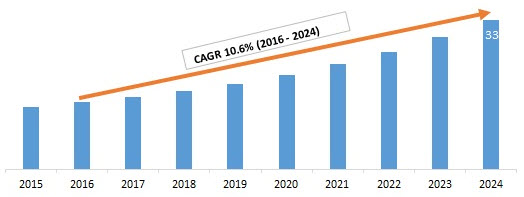
According to Allied Market Research, the flexible printed circuit board market is expected to reach $27 billion by the year 2022.
Currently, there are three common types of flexible PCB designs on the market:
- Flexible PCBs offer vibration resistance compared to rigid substrate versions and can reduce costs, weight, and assembly errors when replacing individual wires used in ribbon cables or wiring harnesses.
- Rigid-Flex PCBs use a mixed substrate combination, where part of the PCB is made from a rigid substrate while another part (or parts) uses a flexible This approach offers designers great leeway in coming up with creative design solutions, such as where there is a need to wrap a circuit around an object.
- HDI (high-density-interconnect) Flexible PCBs pack much more circuitry into the same real estate area by shrinking and layering the electronic pathways (e.g. micro vias) and allowing placement of components on both sides.
8. 3D Printed PCB Assemblies
When we talk about the use of 3D printers in manufacturing PCBs, it’s easy to overlook the fact that the P in PCB stands for printed circuit boards.
In other words, print circuit boards have been printed since their inception, hence the acronym!
So it’s not surprising that when it comes to standard PCB fabrication, 3D printers don’t really (pardon the pun) add that much to the equation because the current methods for printing are already quite proven and effective.
However, when we talk about the possibility of 3D printers building the components attached to the printed circuit board, then the opportunity becomes much more compelling.
There is a lot of work to be done to make this a reality, particularly for an industry that currently relies on 2D Gerber files that don’t easily translate to what a 3D printing system understands.
Nonetheless, interesting progress is being made, which makes this an important area to monitor for breakthroughs.
For example, researchers at MIT’s Computer Science and Artificial Intelligence Laboratory (CSAIL) have gone at the problem by using 3D printers to print substrates, sensor components, and the processing circuity in one go, which in turn, could revolutionize the PCB fabrication industry.
9. Increasing Shift to Machine Assembly over Hand Assembly, Even in Small Runs.
As consumer taste drives the market toward increasingly powerful yet smaller devices, the era of hand assembly appears to be coming to a close, even for very short production runs.
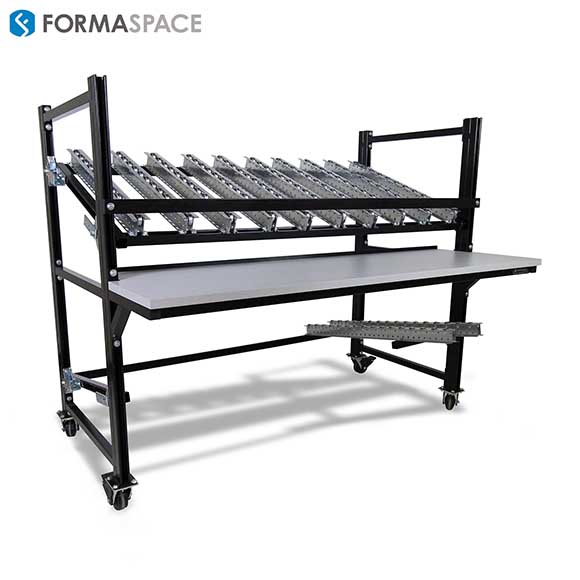
There are multiple reasons for the shift toward machine-assembly:
- Specialist manufacturers using machine-assembly techniques can offer significantly faster turn-time.
- Component miniaturization and increased density of PCBs makes hand assembly nearly impossible.
- Hand labor is expensive, especially in the American market.
- Robots are becoming smarter and less expensive.
10. Efforts to Make the PCB/A Industry More Sustainable
It’s been over 10 years since the European Union implemented its restrictions on the use of certain hazardous substances in electrical and electronic equipment.
The Restriction of Hazardous Substances Directive, known as RoHS, and the related Waste Electrical and Electronic Equipment Directive (WEEE), which sets recycling and recovery goals, have helped reduce lead, mercury, cadmium, and other dangerous substances in the environment, as well as helping solve the mounting problem of electronic waste.
Despite the fact that RoHS is an EU directive, most global manufacturers choose to have one SKU worldwide rather than manufacture different versions to meet each individual country’s environmental regulations.
Yet the transition away from lead-based solder has not been an easy one, as quality problems arising from brittle connections and other failure modes have bedeviled many manufacturers.
What’s next on the agenda for environmental protection and sustainability?
One area to watch is power consumption management. As the use of integrated circuits expands around the globe, the energy used to power these devices is increasing at a rapid rate.
More effort will be needed to incorporate power saving features into devices, as well as allowing them to easily switch over to solar power where practical.
Formaspace is Your PCB/A Industry Partner
When it’s time to make your manufacturing facility more efficient, it’s time to call Formaspace.
We offer a complete line of industrial furniture for your PCB fabrication, assembly, quality test, and repair operators. Our ergonomic furniture solutions are used by the top Fortune 500 assembly facilities. These include our line of workbenches with built-in EDM protection that covers the entire work surface, as well as sit-to-stand workbenches, desks, and tables that allow workers to set a comfortable height for working while sitting or standing, all at the touch of a button
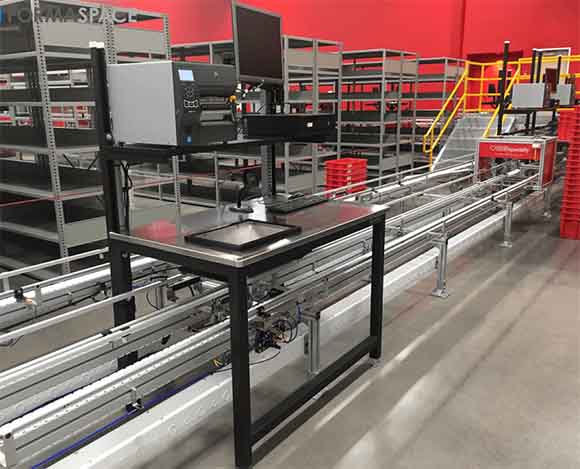
Contact your Formaspace Design Consultant today to learn how we can help you organize your facility to improve efficiency and well-being of your workers.



